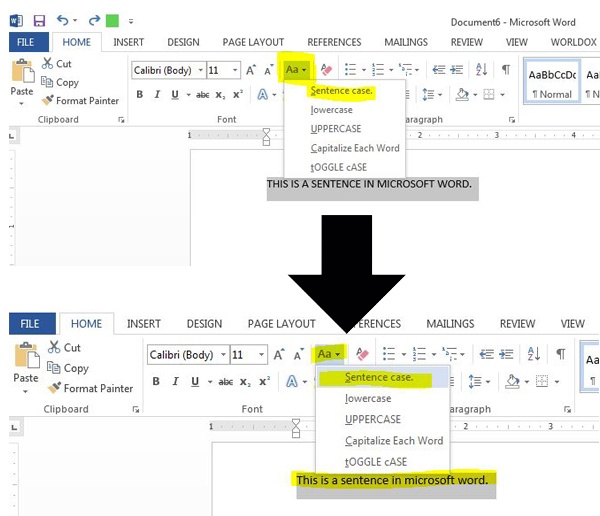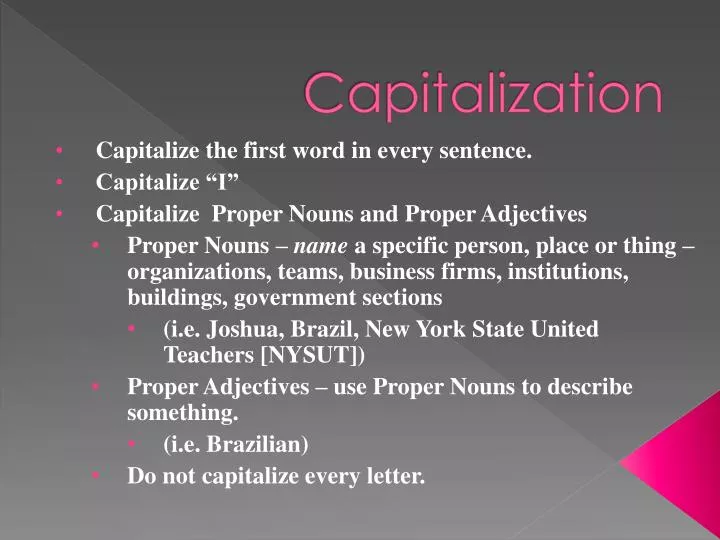

This brings up the Change Case drop-down gallery, as shown in Figure 3.Within this group, click the Change Case button, highlighted in red withinįigure 2: Change Case button within the Font group Now, access the Home tab of the Ribbon and locate theįont group.In Figure 1 below, we have selected some text that seems to be suffering from a serious CAPS malady. Open any presentation and select the text you want to change.

PowerPoint 2010's Change Case option to quickly change the case of selected text on your slide: Rather than retyping the whole text again, you can use Reason may be, you will end up with text that is certainly not useable on your slide. Is one of those people who type everything in small case, or maybe they just turn on the Caps Lock button and forget turning it off! Whatever the The problem with this approach may stem from the fact that whoever sent you the content Just copy it from their email and paste it within PowerPoint. Rather than typing all that content, you may Letters that would be uppercase using the other options will be slightly larger than letters that would be lowercase using the other options.It happens often that your boss, colleague, or friend sends you some content for your presentation. NOTE: Small caps in the Font dialog box can be used in conjunction with the other two methods for changing case. Confused? It’s a bit like strikethough or superscript formatting which changes the appearance in the document, but the underlying letters haven’t changed. They change the look of the letters but don’t change the underlying Upper/lower case of the letters. These two ‘Caps’ options are different from regular Change Case choices. All caps – All letters will be capitalized, the same as if UPPERCASE was selected using the method described above.Small caps – All letters will be capitalized, but letters that were already lowercase will be slightly smaller, as shown below.There are two options for capitalization on the Font dialog box. Always look for them on the ribbon and click to discover a lot more choices than the basic Office ribbon offerings We’ve talked about those little icons many times at. The Font dialog box is under the arrow in the bottom right corner of the Font group of the Home tab on the Ribbon. There are two lesser known change case options hiding under the Home | Font part of the ribbon. Uppercase letters become lowercase, and all lowercase letters are changed to uppercase. Capitalize each word – the first letter of each word will be uppercase, and the rest lowercase.Uppercase – all the selected text goes to UPPER case.Lowercase – all text will forced to lowercase.Sentence case – The first letter of each sentence in the selected text is capitalized and the rest will be lowercase.There are two more choices here than using Shift + F3. When you click the button, a dropdown menu will appear showing different options for you to choose. Sentence case (first letter of each sentence is uppercase and the rest lowercase)Īnother way to change the case of text is to select the text that you want to change and click the Change Case button on the Font group of the Home tab on the Ribbon.This option will toggle around three different case options: To change text using only the keyboard, highlight the selected text, hold down the shift key and press F3. Replace text – good when there’s many words or phrases to change.There are four ways to change the case of existing text in Word: ‘change case’ can become ‘Change Case’ or ‘CHANGE CASE’ without retyping. Change Case options in Word, like many Word features goes beyond the obvious choices on the ribbon.Īlter the upper/lower case of words, phrases or more.


 0 kommentar(er)
0 kommentar(er)
